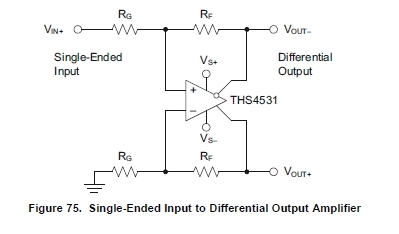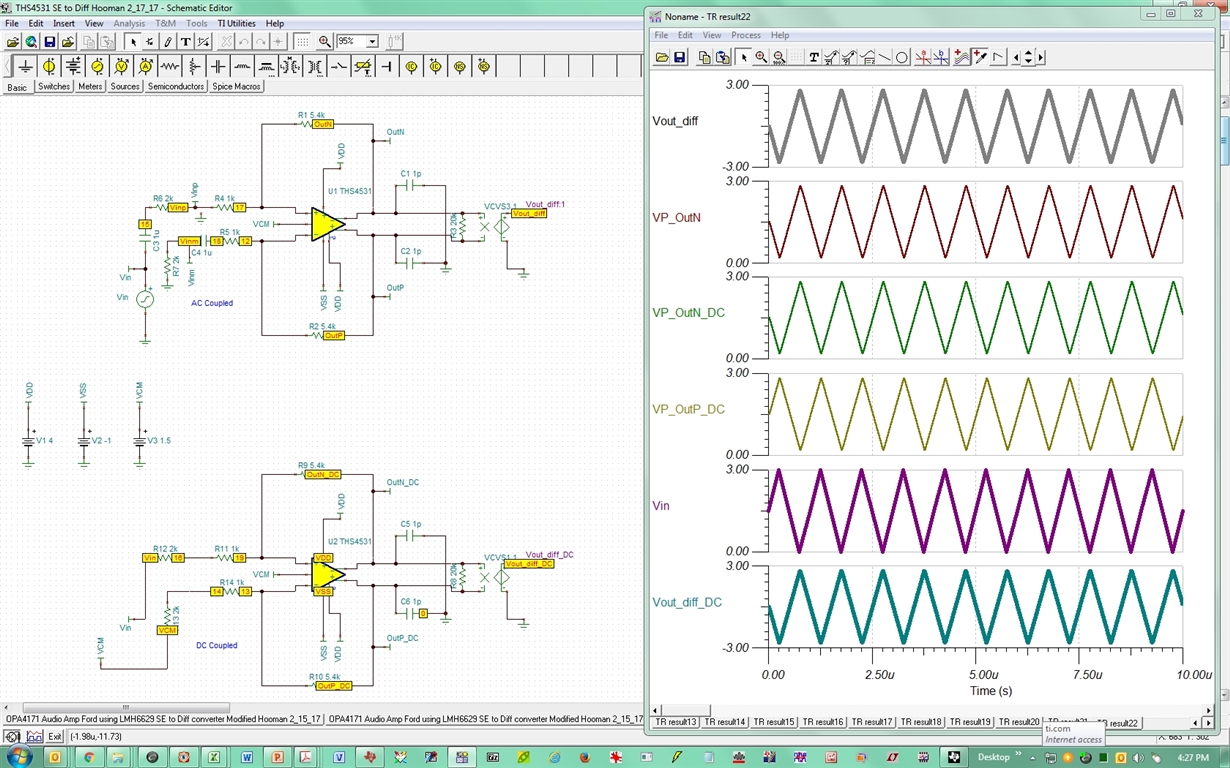Other Parts Discussed in Thread: TINA-TI, , THS4531
Tool/software: TINA-TI or Spice Models
Hi All,
I am using TMS320F28377D for my inverter application. I need to use 16-bit ADC to get precise result. So, I have to use differential configuration there is no other option. My sensor output is buffered single ended signal. First of all i need to convert it into differential foam. For that particular application,I am using TL084 OPAMP to do this task. One sensor output(VoutP) is directly applied to ADCINA0 and another(VoutN) is subtracted from 3.3V (Which is VREFHI for my controller) and then applied to ADCINA1 . So I can also maintain my common mode requirement which is 1.65V (Vcm = (VREFHI + VREFLO)/2). At every instance my common mode voltage is maintained.For E.g., VoutP=2.2V then VoutN=1.1V and Vcm = (2.2+1.1)/2 = 1.65V.
Figure 1 is simulation circuit and figure 2 is output.
Now, my question is "Is it right method to do this task?". Can i apply this differential signal to ADC?
See following thread : e2e.ti.com/.../2100577
Figure 1:
Figure 2:
Thanks and Regards,
Maulik Timbadiya




